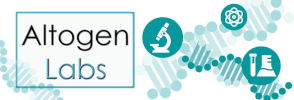Altogen Labs validated Lung Cancer Xenograft animal models:
A549, H460, H226, NCI-H1975, DMS273, LL/2, Calu-3, Calu-6, H1155, NCI-H522, NCI-H1703, H1993, HCC827
Lung Cancer Xenograft Models: Subcutaneous, Orthotopic, And Metastatic ![]()
Altogen Labs provides a robust suite of validated lung cancer xenograft models, enabling rigorous in vivo evaluation of novel therapeutics across the spectrum of non-small cell lung carcinoma (NSCLC), small cell lung carcinoma (SCLC), and mesothelioma. These models encompass subcutaneous, orthotopic, and metastatic xenotransplantation platforms developed using human-derived tumor cell lines that recapitulate key histopathological, genetic, and molecular features of primary lung malignancies. Selection of a xenograft model is based on clinically relevant criteria including oncogenic mutations, protein expression profiles, histological subtype, and tumor growth kinetics, thereby allowing precise tailoring of study design to therapeutic modality and mechanism of action.
In-house validated xenograft models:
A549 Lung Cancer Subcutaneous And Metastatic Xenograft Model: Download ![]()
Calu-3 Subcutaneous Tumor Model: Download ![]()
DMS273 Lung Cancer Model: Download ![]()
Calu-6 Xenograft Model: Download ![]()
NCI-H226 Lung Cancer Xenograft Model: Download ![]()
H460 Subcutaneous And Orthotopic Model: Download ![]()
H1155 Lung Cancer Xenograft Model: Download ![]()
H526 SCLC Lung Cancer Xenograft Model: Download ![]()
HCC827 Lung Cancer Subcutaneous and Metastatic Model: Download ![]()
NCI-H1703 Xenograft Model: Download ![]()
NCI-H1975 Xenograft Model: Download ![]()
NCI-H1993 Orthotopic and Metastatic Model: Download ![]()
The A549 cell line, derived from a pulmonary adenocarcinoma metastasis, is widely employed due to its reproducible tumorigenicity, KRAS mutation status, and capacity for spontaneous metastasis. In contrast, the H460 large-cell NSCLC model expresses wild-type p53 and exhibits rapid proliferation, making it valuable for cytotoxicity assessments. H226 cells, originating from a patient with mesothelioma, represent a squamous subtype and are frequently used in evaluating chemosensitivity and resistance. The HCC827 and NCI-H1975 models, both harboring activating EGFR mutations, are instrumental in studies of tyrosine kinase inhibitor efficacy and resistance mechanisms. NCI-H1975 additionally bears the T790M resistance mutation, providing a platform for evaluating next-generation EGFR inhibitors. Calu-3 and Calu-6 cell lines represent NSCLC adenocarcinoma and anaplastic carcinoma, respectively, with Calu-3 exhibiting high EGFR and HER2 expression and Calu-6 characterized by a hypotriploid karyotype and cytokeratin expression.
SCLC models such as DMS273 and H526 recapitulate neuroendocrine tumor biology, with DMS273 displaying a comprehensive oncogenic profile including overexpression of MYC family genes and expression of neuropeptides and hormone-related transcripts. LL/2, derived from Lewis lung carcinoma in C57BL/6 mice, serves as a syngeneic model allowing studies in immunocompetent hosts, albeit with limited metastatic potential. NCI-H1155, an NSCLC line expressing EGFR and PD-L1, is suitable for immuno-oncology studies. NCI-H522 and NCI-H1703 provide additional NSCLC models with distinct TP53 and PDGFRα mutations, respectively, broadening the scope for targeted and immunotherapeutic investigations. The NCI-H1993 line, derived from a metastatic lymph node and exhibiting MET amplification, is particularly relevant for studies involving MET-targeted therapies and modeling of invasive disease.
All xenograft studies are performed in GLP-compliant and IACUC-regulated facilities by trained scientific personnel at Altogen Labs. Tumor implantation is carried out in a variety of immunodeficient murine hosts, including NSG, NOD/SCID, BALB/c nude, and Swiss nude strains, each selected to optimize engraftment efficiency, immune tolerance, and experimental duration. These models offer differential support for tumor growth, immune modulation studies, and long-term therapeutic monitoring. Importantly, Altogen Labs provides tailored study design and execution across subcutaneous, orthotopic, and metastatic lung cancer models, supporting robust, reproducible preclinical data generation. The integration of tumor biology, genetic profiling, and pharmacological relevance ensures that these xenograft models offer a translationally meaningful platform for drug efficacy and mechanism-of-action studies in lung oncology research.
